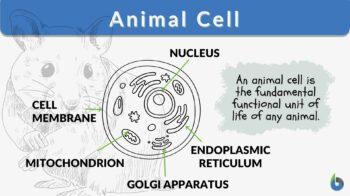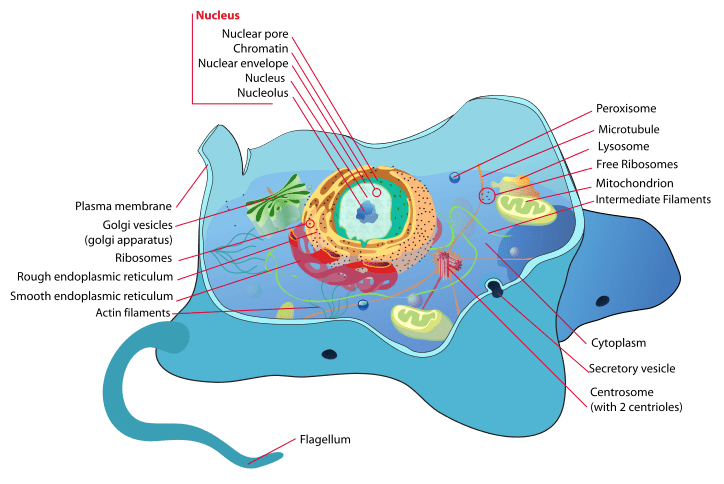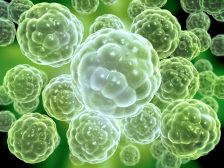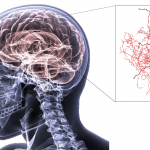
Animal cell
n., plural: animal cells
[ˈænɪməl sɛl]
Definition: the structural and functional unit of an animal body
Table of Contents
An animal cell is the fundamental functional unit of life of animals. It is also the basic unit of reproduction. Animal cells were first observed in the 17th century when microscopy was invented. Robert Hooke, an English natural philosopher, was the first to describe microscopic pores, which he later called cells, albeit from samples of a plant cork. Anton van Leeuwenhoek, a Dutch scientist, was also able to observe cells under a microscope. Apart from the single-celled organisms, such as prokaryotic cells and protozoa, he was the first to describe red blood cells and sperm cells of animals and humans.
Animal Cell Definition
Animal cells are the basic structural and functional units of animal tissues and organs. They are eukaryotic cells. It means that, unlike prokaryotic cells, animal cells have membrane-bound organelles suspended in the cytoplasm enveloped by a plasma membrane. This fundamental feature is not exclusive to animal cells though. Both animal cells and plant cells are eukaryotes, and therefore a plant cell has this feature, too. However, plant cells can be easily distinguished from animal cells by the presence of a cell wall. Apart from this, an animal cell also lacks plastids, especially chloroplasts, that are involved in a plant’s photosynthesis.
Animal Cell Structure

A typical structure of an animal cell includes organelles, cytoplasmic structures, cytosol, and cell membrane. Organelles are membrane-bound structures inside the cell and each of them has a distinctive role. Cytoplasmic structures are structures in the cytoplasm that are not bounded by membranes and yet have a crucial role in certain cellular activities. The cytosol is the fluid component of the cytoplasm. It is where a wide variety of cellular processes take place, e.g. cell division.
Cell Membrane
The cell membrane of an animal cell is a lipid bilayer with embedded proteins. The structural organization of the cell membrane permits selective permeability. Not all substances will be able to enter the cell. Small non-polar molecules may pass through with relative ease. However, polar molecules cannot and as such would require transporters such as membrane proteins. The cell membrane is the only structure that surrounds an animal cell. In spite of the lack of a cell wall, the cell membrane of the animal cell contains cholesterol that provides structural integrity and support. Furthermore, the presence of cholesterol and the lack of cell walls in animal cells make them fluid rather than rigid, and therefore, render them the capability of movement.
Nucleus
The nucleus is the most prominent organelle in an animal cell. It contains chromosomes, nucleolus, nuclear bodies, and nucleosol. It is surrounded by a nuclear envelope (also called nuclear membrane) that is perforated with nuclear pores. Since it contains most of the genetic material of an animal, it is regarded as the control center of the cell, regulating most of the cell’s activities such as metabolism, growth, and reproduction. It does so by regulating gene expression.
Endoplasmic reticulum
The endoplasmic reticulum (ER) is an interconnected network of flattened sacs or tubules. The ER that is studded with ribosomes is called rough ER; those without are called smooth ER. Rough ER is involved in protein synthesis whereas smooth ER, in lipid synthesis.
Golgi apparatus
An organelle that is comprised of stacks of cisternae is called the Golgi apparatus. The Golgi apparatus is involved in the packaging and secretion of biomolecules, e.g. proteins, glycosylation, and lipid transport. The collective term for all the Golgi apparatus within the cell is called the Golgi complex.
Mitochondria
The mitochondria are the animal cell’s semi-autonomous organelles. They have their own genetic material (called mtDNA). They are involved in energy synthesis by means of the citric acid cycle.
Lysosomes
Lysosomes are single-membraned structures containing various digestive enzymes. As such, its function is intracellular digestion.
Endosomes
Endosomes are vesicles involved in endocytosis. When an animal cell takes in a particulate from the outside, it surrounds it with a membrane, and then brings it to the endosome. The endosome, in turn, take it to the lysosome.
Vacuole
Vacuoles are present in animal cells. However, they are not as prominent as they are in plant cells. Vacuoles are involved in osmoregulation, intracellular secretion, storage, and excretion.
Centrioles
Centrioles are organelles with a 9+2 microtubular configuration. They are self-replicating and help in organizing cell division. They are present in animal cells only.
Cytoskeleton
The cytoskeleton is the internal framework of the animal cell. The different types of cytoskeleton are actin filaments, intermediate filaments, and microtubules. Their fundamental role is for controlling cell shape, maintaining intracellular organization, and for cell movement.
Some animal cells have specialized structures, such as flagella and cilia, involved in locomotion. Flagella are long, slender, whip-like extensions that enable cells to move by propulsion. Aside from movement, certain flagella are used for sensation and signal transduction (e.g. in rod photoreceptor cells of the eye, olfactory receptor neurons of the nose, and kinocilium in the cochlea of the ear). Cilia are hair-like projections on the surface of certain cells. The epithelial cells of the lungs are an example of an animal cell with cilia.
Types of Animal Cells
Animals are multicellular organisms, and as such, their body is comprised of several cells (about trillions of cells). A group of cells performing a specific function is called a tissue. Animal cells in a tissue may be held through cell junctions, e.g. tight junctions, gap junctions, and desmosomes. The animal body has several types of cells. Examples of common animal cell types include skin cells, muscle cells, blood cells, fat cells, nerve cells, sex cells, and stem cells. Skin cells are cells that make up the skin or epithelial tissue. Muscle cells (also called myocytes) are cells that make up muscular tissue. Blood cells are the cellular elements of the blood. They are the red blood cells and white blood cells. Fat cells (also called adipocytes) are cells of the adipose tissue. Nerve cells (also called neurons) are cells of nervous tissue. Sex cells are cells involved in sexual reproduction. In males, the sperm cell is the mature and functional sex cell. In females, the egg cell is the sex cell. The sex cells are the only haploid cells. The rest of the animal cells are diploid and are referred to as somatic cells. Stem cells are totipotent, meaning they could develop into any type of animal cell.
Animal Cell Facts
- During cell division, animal cells divide by forming a cleavage furrow to separate daughter cells. This is in contrast to the cell plate that a plant cell forms during cell division.
- Animal cells respire aerobically. It needs oxygen as it serves as the final electron acceptor in redox reactions of cell respiration.
- Not all animal cells have a nucleus. For example, red blood cells do not have a nucleus to have more space for hemoglobin.
Try to answer the quiz below to check what you have learned so far about the animal cell.
Further Reading
- Plant Cells vs. Animal Cells – Biology Online Tutorial
- Animal
- Cell
- Plant cell
- Fun activity: Animal Cell Coloring – BiologyCorner.com
References
- Molecular Expressions Cell Biology: Animal Cell Structure. (2019). Retrieved Fsu.edu website: https://micro.magnet.fsu.edu/cells/animalcell.html
- kazilek. (2009, September 27). Cell Parts Ask A Biologist. Retrieved from Asu.edu website: https://askabiologist.asu.edu/cell-parts
- Lab Manual Exercise # 1a. (2012). Retrieved from Palomar.edu website: https://www2.palomar.edu/users/warmstrong/lmexer1a.htm
- Plant and Animal Cells Grade 4 Unit 3 Lesson 1. (n.d.). Retrieved from https://coast.noaa.gov/data/SEAMedia/Presentations/PDFs/Grade 4 Unit 3 Lesson 1 Plant & Animal Cells.pdf
- Cell Structure and Function. (2019). Retrieved from Msu.edu website: https://msu.edu/~potters6/te801/Biology/biounits/cellstructure&function.htm
- Animal Cell – The Almighty Cell. (2019). Animal Cell – The Almighty Cell. Retrieved from Google.com website: https://sites.google.com/a/asu.edu/the-almighty-cell/the-source/animal-cell
© Biology Online. Content provided and moderated by Biology Online Editors









